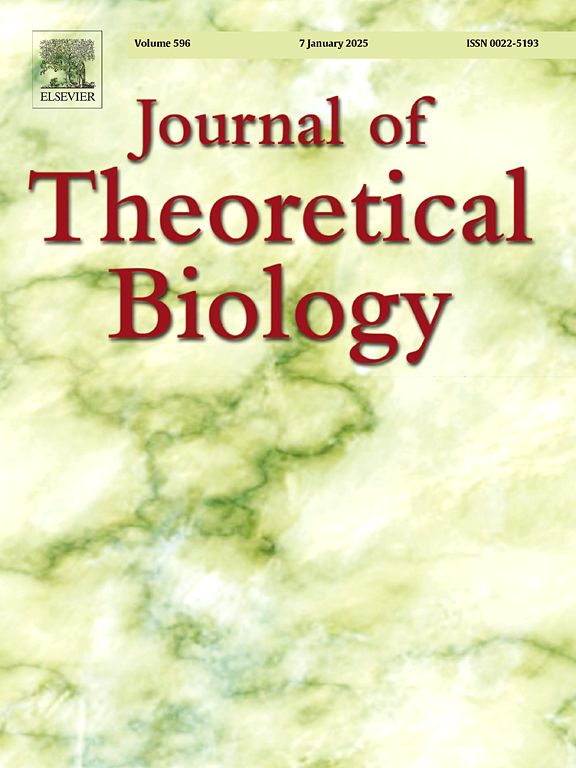多类型流行病的灭绝概率和高峰时间,并应用于关注的COVID-19变体
IF 1.9
4区 数学
Q2 BIOLOGY
引用次数: 0
摘要
在2019冠状病毒病大流行期间,新型VoCs的出现促使世界各国政府采取了不同的应对措施,旨在减轻更具传染性或更有害的菌株的影响。我们使用带有迁移的多类型分支过程框架来模拟一种新型VoC入侵具有异质疫苗和感染获得性免疫的人群。我们确定了需要达到的病例数,以确保该菌株不太可能随机灭绝,因此,该菌株已经在人群中建立起来。为了估计达到这个数目的首次通过时间分布,我们使用随机模拟和分析结果的混合。首次通过时间分布提供了一个时间窗口,这对政策制定者规划旨在抑制或延迟新VoC引入的干预措施很有用。我们将我们的方法应用于英国的COVID-19模型,尽管我们的结果适用于其他病原体和环境。本文章由计算机程序翻译,如有差异,请以英文原文为准。
Probability of extinction and peak time for multi-type epidemics with application to COVID-19 variants of concern
During the COVID-19 pandemic, the emergence of novel variants of concern (VoCs) prompted different responses from governments across the world aimed at mitigating the impacts of more transmissible or more harmful strains. We model the invasion of a novel VoC into a population with heterogeneous vaccine- and infection-acquired immunity using a multi-type branching process framework with immigration. We define the number of cases needed to be reached to ensure stochastic extinction of this strain is unlikely and, therefore, the strain has become established in the population. To estimate the first-passage time distribution to reach this number of cases we use a mixture of stochastic simulations and analytic results. The first-passage time distribution gives a time window that is useful for policymakers planning interventions aimed at suppressing or delaying the introduction of novel VoC. We apply our method to a model of COVID-19 in the United Kingdom, though our results are applicable to other pathogens and settings.
求助全文
通过发布文献求助,成功后即可免费获取论文全文。
去求助
来源期刊
CiteScore
4.20
自引率
5.00%
发文量
218
审稿时长
51 days
期刊介绍:
The Journal of Theoretical Biology is the leading forum for theoretical perspectives that give insight into biological processes. It covers a very wide range of topics and is of interest to biologists in many areas of research, including:
• Brain and Neuroscience
• Cancer Growth and Treatment
• Cell Biology
• Developmental Biology
• Ecology
• Evolution
• Immunology,
• Infectious and non-infectious Diseases,
• Mathematical, Computational, Biophysical and Statistical Modeling
• Microbiology, Molecular Biology, and Biochemistry
• Networks and Complex Systems
• Physiology
• Pharmacodynamics
• Animal Behavior and Game Theory
Acceptable papers are those that bear significant importance on the biology per se being presented, and not on the mathematical analysis. Papers that include some data or experimental material bearing on theory will be considered, including those that contain comparative study, statistical data analysis, mathematical proof, computer simulations, experiments, field observations, or even philosophical arguments, which are all methods to support or reject theoretical ideas. However, there should be a concerted effort to make papers intelligible to biologists in the chosen field.

 求助内容:
求助内容: 应助结果提醒方式:
应助结果提醒方式:


